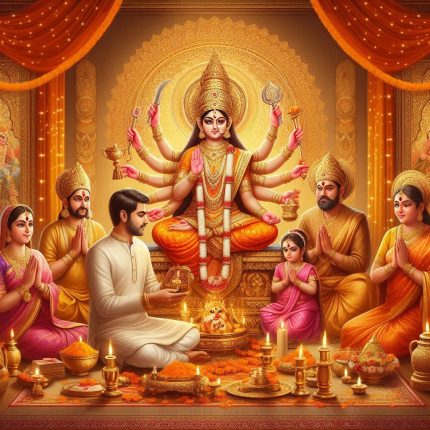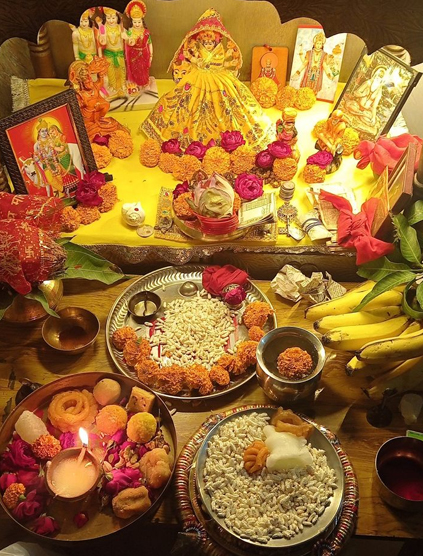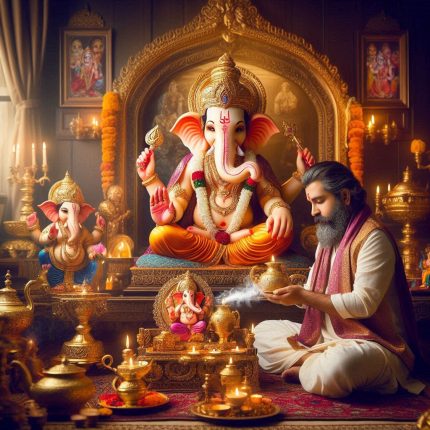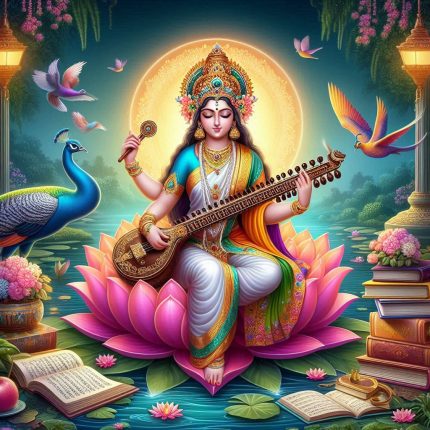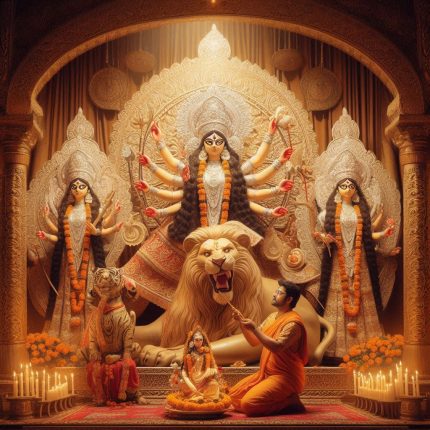Dussehra Puja: A Celebration of Victory and Righteousness
Samagri
for Puja:
Haldi [organic] (20gm), Kumkum [organic] (20gm), Tulsi Mala (1), Diya Batti (5), Beetle Nuts (5), Desi Ghee (20ml), Honey (20ml), Jaggery (Gudh) (20gm), Akshata [Yellow rice] (20gm), Yagno-paveetha (5), Karpoora [camphor] (5Tabs), Red/White/Yellow Cloth(1 mtr), Prasad [Laung, Elaichi, Mishri] (20gm), Mouli (25mtr), Ganga Jal (15ml), Durva [fresh] (1), Agarbatti (6)/Dhoop (2), Dakshina (100INR), God Idols (pair), Sambrani (2), Sambrani Holder (1), Kalash [small copper] (1), Panchpatra [small copper] (1), Diya Holder (2), Panchamrit spoon (1), Karpoora Holder(1), includes perishables [Beetle Leaves [fresh] (9), Flowers [fresh] (incl mala), Tulsi [fresh], Mango Leaves [fresh] (7)]
Small Havan:
Cow Dung Cake (2), Mango Wood (250gm), HavanSamagri [20+ Grganic Herbs] (100gm), Ghee (20ml)
Yajman to provide:
Curd (100gm), Milk (100ml), Mithai (250gm), Fruits [5types], Coconut (1), HavanKund, SuchiSarva (Havan Spoon) (1), Kalash [big] (1), Bowl [preferably copper/silver] (1), Spoon [preferably copper/silver] (1), Utensils [2 big Plates (for Aarti/Samagri), disposable Plates, Bowls & Spoons], First solid food (preferably Kheer or Payasam)
Importance and Significance of Dussehra Puja
The Dussehra Puja holds profound significance as it serves as a reminder of the importance of moral values and the eternal struggle between good and evil. It encourages individuals to reflect on their own lives, to overcome personal challenges, and to strive for righteousness. The festival also fosters a sense of community, as families and friends come together to celebrate the teachings and principles embodied by Lord Rama.
Benefits of Dussehra Puja
- Reinforcement of Values: The puja emphasizes the importance of integrity, truth, and righteousness in everyday life.
- Spiritual Cleansing: Engaging in the rituals purifies the mind and spirit, helping devotees release negativity and embrace positivity.
- Strength and Courage: Worshipping the deities instils strength and courage to face challenges and overcome obstacles.
- Community Bonding: The celebration fosters unity and camaraderie among communities, as people come together to participate in festivities.
Occasions to Perform Dussehra Puja
Dussehra Puja is performed on the tenth day of the month of Ashwin (September-October) during the Hindu festival season. The rituals can take place in homes, temples, or public spaces, with elaborate celebrations often held in the form of plays and processions.
Dussehra Puja Vidhi (Procedure)
- Preparation: Clean and decorate the puja space with flowers, colorful rangoli, and lights, creating an inviting atmosphere for worship.
- Setup: Arrange an altar with idols or images of Lord Rama, Goddess Sita, and Lord Hanuman. Include offerings such as flowers, fruits, and sweets.
- Invocation: Begin the puja by invoking Lord Ganesha for the removal of obstacles, followed by prayers to Lord Rama for strength and guidance.
- Offering Prayers: Devotees recite mantras and offer heartfelt prayers, expressing gratitude for the blessings received and seeking divine support.
- Puja Rituals: Perform aarti, offer flowers and sweets, and read passages from the Ramayana, recounting the victory of Lord Rama over Ravana.
- Burning of Effigies: In public celebrations, effigies of Ravana, Meghnath, and Kumbhkaran are burned to symbolize the destruction of evil.
- Celebration: Conclude the puja with a festive meal, sharing sweets, and engaging in cultural performances that reflect the spirit of the festival.
Dussehra Shubh Muhurat
The Shubh Muhurat for Dussehra Puja is determined based on astrological recommendations, often focusing on specific timings for rituals to enhance their effectiveness.
By celebrating Dussehra Puja, devotees honour the values of righteousness and the power of good over evil. This festival serves as a source of inspiration, encouraging individuals to embrace their inner strength and face life’s challenges with courage and determination.


